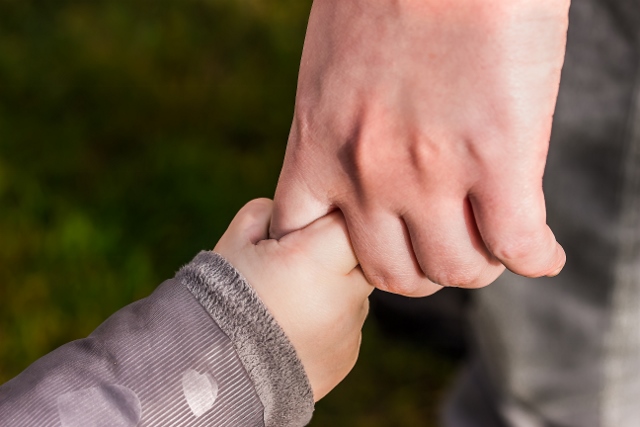Hand-Under-Hand or Hand-Over-Hand?

Jan Moseley
Visual Impairment Specialist/Newsletter Editor
You may never have thought about these instructional strategies, let alone which one is preferable for your child with visual impairments but amazingly, there are some considerations you may wish to address.
Back in graduate school, I learned about using the hand-over-hand technique. I would place my hands over the top of the child’s hands so the child would be touching the materials. Then my hands would guide her to actually perform the activity. This strategy worked –most of the time- but occasionally, a specific student or specific task might not turn out as I had intended. I don’t recall ever analyzing why that might be the case.
A recent request from one of the preschool teachers for information about hand-under-hand caused me to search online. I found a well-written article in the American Foundation for the Blind website, Hand-Over-Hand and Hand-Under-Hand that pointed out the subtle differences in my learned technique. Could it be that giving the child more control by allowing her to place her hands on top of mine while I complete the activity would result in a higher success rate than I previously achieved? I don’t have a conclusive answer, but it makes sense to me.
Support for the Strategy
A plus of the hand-under-hand strategy might be to give a reluctant child more of a secure touch since I’d be touching the “foreign” materials. She could pull her hands away any time she chose rather than feeling “forced” to touch something new that might be unsettling. She might be able to feel more clearly exactly what my hands were doing. Either way, her level of comfort might increase and allow for more successful completion of the task benefits I never considered!
Intrigued? I certainly was. Visit the AFB website for the full article. I also visited the National Federation of the Blind to see what they were saying about hand-over-hand and hand-under-hand teaching. Don’t forget to read the article “Talking the Language of the Hands to the Hands” in the National Center on Deaf-Blindness’s website. I am certain there are probably many more helpful articles but these made me a believer! The consensus appeared to be that hand-under-hand could be a much more successful technique for children with blindness or visual impairments than hand-over-hand ever was!

Great article, Jan. I’ve learned about hand-under-hand from the Deaf-Blind projects in Maryland and Virginia. So helpful. And, yes, it gives the child more autonomy which it is so important since children with sensory loss are often constantly directed and moved around.